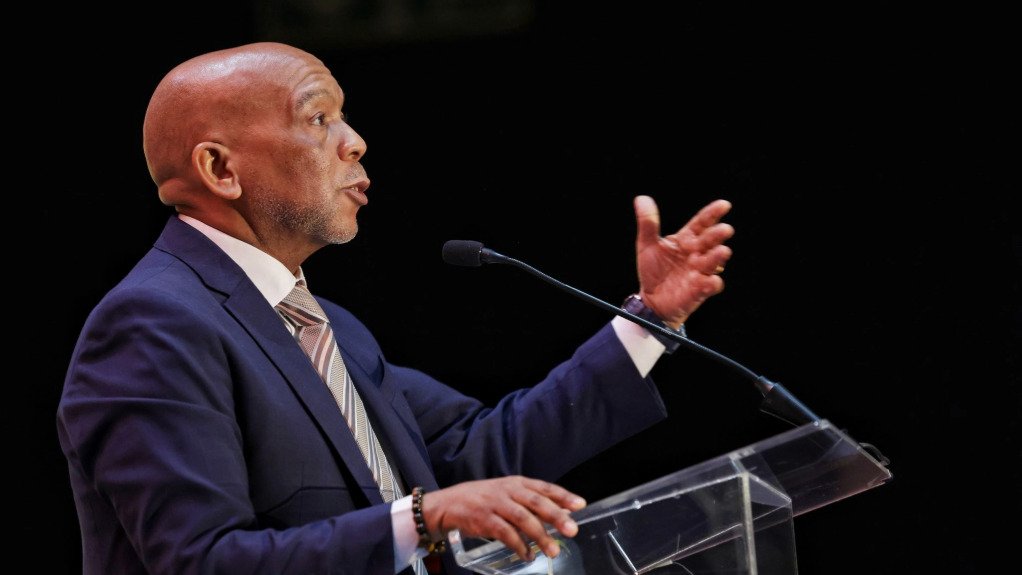Electricity and Energy Minister Dr Kgosientsho Ramokgopa has expressed confidence that tariff and non-tariff solutions can be found to ensure that Eskom is able to meet the obligations set by the National Treasury as part of the R256-billion debt-relief package while still allowing the entity to invest in new generation capacity.
In a briefing called to mark the fact that, as of October 13, loadshedding had not been implemented for more than 200 days, Ramokgopa expressed support for the State-owned entity’s plan to build 2 GW of new wind and solar PV capacity over the coming two to three years.
CEO Dan Marokane said the idea was to pursue a “step change” in Eskom’s renewables generation, which was currently limited to small-scale solar PV and the Sere Wind Farm and its pumped hydro schemes.
“We postponed the shutting down of some of our stations, as was initially planned, so as to enable us to shore up security of supply and also to enable us to do an orderly transition.
“[So] what we need to do is to really bleed in new technologies alongside our existing operations; on our land, on the back of the capacity that we have with our people and closer grid connectivity.
“And we have indicated that over the next two to three years, we see a pipeline of just over 2 GW of opportunities,” Marokane said, referring specifically to solar PV projects alongside coal stations such as Lethabo, where the briefing was held, and the closed Komati station, where the solar PV plant would be coupled with battery storage.
He indicated that solar PV and wind could be added in close proximity to five coal stations in Mpumalanga, as well as at the Sere Wind Farm and indicated that Eskom was also still studying prospects for the Tubatse pumped hydro scheme.
The funding strategy for this new build had not yet been announced, but Marokane said it would involve own-build and partnerships with the private sector.
Such a funding strategy was suggestive of Eskom raising new debt; an activity that it was currently prevented from undertaking without the explicit permission of the Minister of Finance.
The National Treasury has also indicated that such approval would depend on Eskom showing proof that it was becoming more self-sufficient and less reliant on the taxpayer to remain a going concern.
The utility has argued that a rapid migration to cost-reflective tariffs would be required to improve its financial sustainability and it has made a revenue application to the National Energy Regulator of South Africa (Nersa) outlining its case for steep tariff hikes to support such a migration.
Known as the sixth multiyear price determination, the submission includes an application for allowable revenue of R446-billion for the 2025/26 financial year that, if granted, would translate to a tariff increase for direct Eskom customers of 36.15% on April 1.
Despite being Eskom’s shareholder Minister, Ramokgopa has slammed the application as being “untenable”, particularly in light of the Government of National Unity’s second apex priority relating to reducing poverty and the high cost of living.
Nevertheless he denied that his stance was in contradiction with the National Treasury’s expectation that Eskom transitions to tariffs that result in less reliance on the fiscus as a precondition for the conversion of debt to equity and for raising fresh debt for investments.
While stressing that he would not interfere with Eskom’s application for new tariffs or Nersa’s determination, he argued that a delicate balance could be struck to facilitate Eskom’s shift to financial sustainability and shield poor households from another steep rise in electricity tariffs.
“The tariff is a transparent mechanism for supporting an entity such as Eskom . . . [but] then there are non-transparent policy instruments that we can use to ensure that Eskom still achieves its ambition without necessarily drawing from the tariff approval but from other support that is given to Eskom.
“That’s where the policymaker comes in, without interfering with the Nersa process,” he said, while indicating that some of these mechanisms were under investigation.
Ramokgopa indicated previously that he might request a delay to the introduction of the carbon tax on Eskom, tackle the R82-billion in municipal arrear debt owed to the utility and review the size and implementation of the free basic electricity allowance to ensure more low-income households receive the benefit.
“To the extent that some of these interventions that we are proposing internally … have got fiscal implications, that is the space of the Minister of Finance.
“All I can do is make the submission, but it’s not for me to pronounce on tax matters,” the Minister added, indicating that the interventions would seek to protect the interests of Eskom, while protecting the poor and keeping the lights on in support of higher levels of growth.
Nersa, meanwhile, will hold hearings into Eskom’s revenue application between November 18 and December 4 and expects to make a final decision on December 20.
EMAIL THIS ARTICLE SAVE THIS ARTICLE ARTICLE ENQUIRY
To subscribe email subscriptions@creamermedia.co.za or click here
To advertise email advertising@creamermedia.co.za or click here











